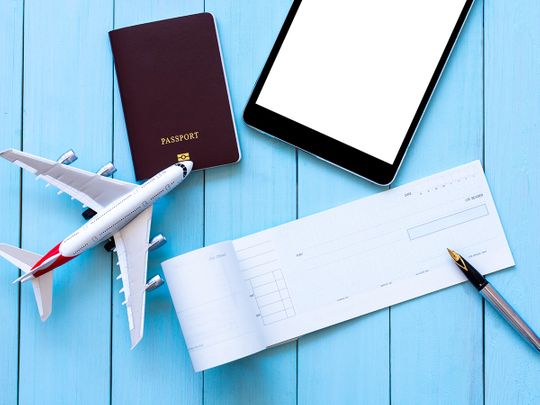
I know when I write this next sentence, there will be young people who will read it and wonder just what the heck I am talking about. But what ever happen to travellers’ cheques?
What’s a traveller’s cheque, I can hear them ask. And you, dear readers, who are of a certain age, can smile smugly and answer that they were paper cheques — yes, paper — that you had to buy before you went on holidays abroad.
Instead of carrying cash — yes, there were very few bank machines, ATMs, back in the day. And the ones that were in place didn’t really talk to each other. If you did put in you own bank card, it would spit it out as if it was some unsavoury foreign food and issue a message that the network wasn’t recognised or something of the like.
There was no such thing as credit cards back in the day either, come to think of it. Maybe Diners Club. Who ever heard of Diners Club? There’d be no point leaving home with it or without it. But I digress. Back to travellers cheques.
Those foreign holidays
When you were going on foreign holidays, one of the big hurdles to cross was going to the bank and ordering your travellers cheques. They came in different currencies like French francs, Spanish pesatas and US dollars. So you had to go to your bank with your passport and put your cash down to order 3,000 Spanish pesatas in travellers cheques. They were as good as money. And, most importantly, before you left the bank, you had to sign them once — leaving the space for a second signature blank.
You also has either wait for your airline ticket to come in the post, or head into your travel agency to pick it up.
The airline tickets always looked so flimsy, set on two sheets of carbon paper with red ink blocks that looked as if they contained all sorts of coded messages and the like.
When you went to the airport you had to check in — none of this online check-in stuff and heading straight to the gate. Nope, you had to queue up and be checked in. And the boarding passes were on stiff paper that was not unlike cardboard, with a serrated portion that would be ripped off at the gate as you boarded.
Era of no cell phones
None of this stuff of having your boarding pass on your phone. That would be impossible because the phone was at home — if you were lucky enough to have one — sat in the hallway and chairs that were made just so you could sit and take notes if you had to.
If you didn’t have a phone, you had to use the public one at the bottom of the street and would be lucky if the local drunk hadn’t relieved himself in it a couple of nights before. You had to make sure you had coins, press button A when the other person answers, or button B to get your coins back, If you didn’t, you’d knock the stuffing out of the metal box.
But back to travellers’ cheques.
When you did get to where you were going, you’d hope like heck that the reception at the you were staying would indeed cash the travellers cheques. In front of the cashier you’d have to sign the second black space, hoping like heck that the two signatures matched — and also matched the one on your passport, which was always scrutinised very heavily by the cashier who always seemed to doubt your authenticity, or question why you didn’t have a moustache when the photograph in the passport was taken six years before hand, and now you’ve got five days of beard growth.
That’s a travellers cheque.





